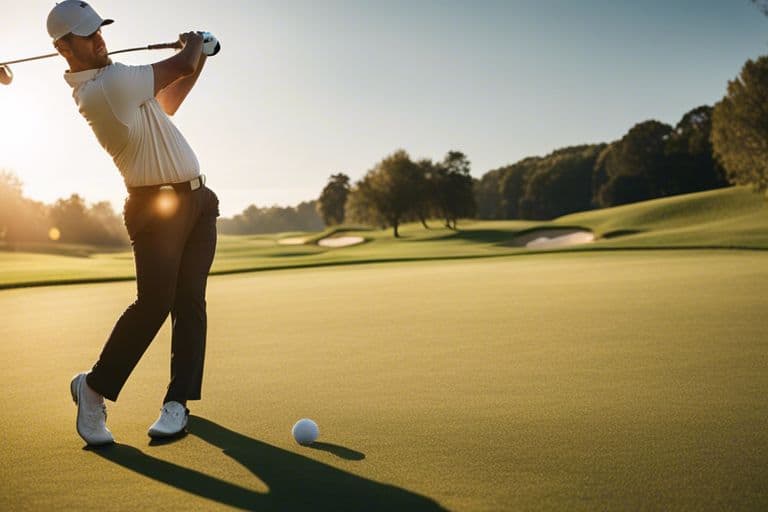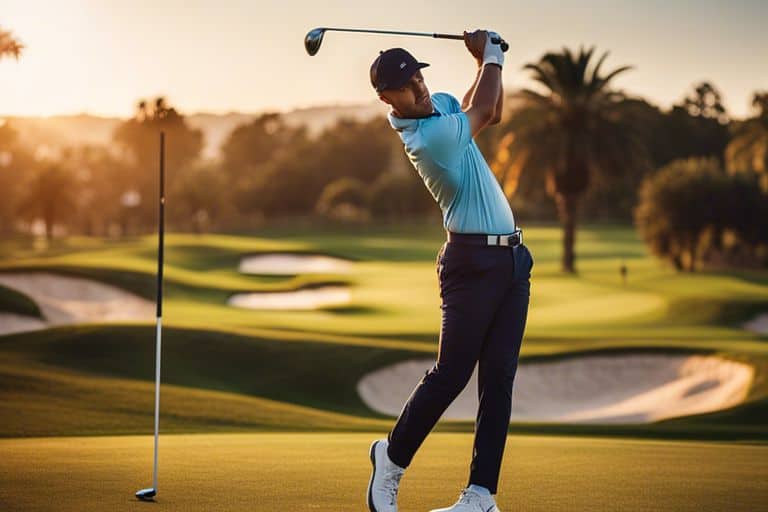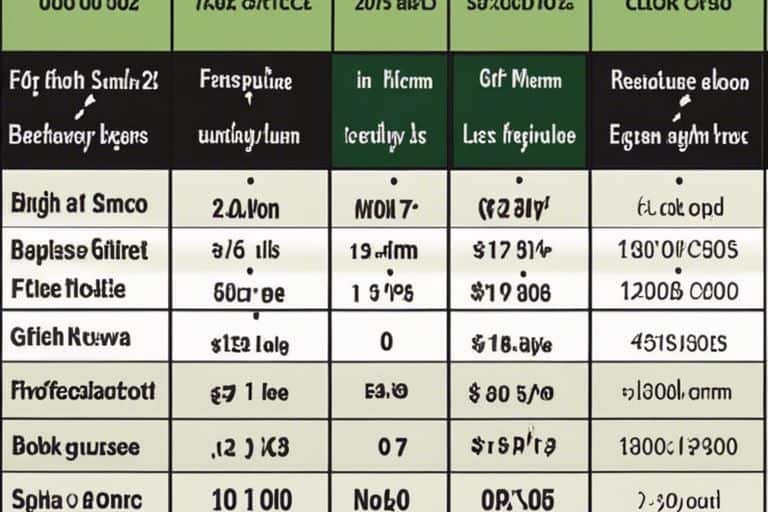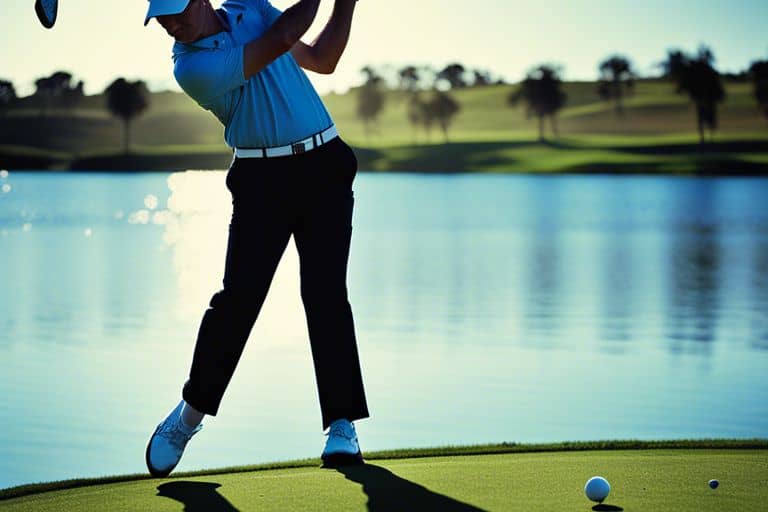How do you hit a "flop and stop and spin" shot in golf?
Permit me to elucidate the intricacies of executing a “flop and stop and spin” shot in golf. This shot requires finesse and precision, as it is designed to stop quickly and spin upon landing, allowing for maximum control and accuracy. To achieve this, you must utilize a specialized technique and approach, carefully calculating the trajectory, angle, and force of the shot.
Additionally, the type of club and ball used are crucial to its success. In this blog post, I will delve into the essential steps and considerations for mastering this challenging yet rewarding shot in golf.
Fundamentals of the Golf Swing
By understanding the fundamentals of the golf swing, you can develop the consistency and control needed to execute the “flop and stop and spin” shot. The golf swing consists of several key elements, including the grip, stance, backswing, downswing, and follow-through. Each of these components plays a crucial role in producing a successful shot.
The Anatomy of a Golf Swing
When it comes to the golf swing, it’s essential to think of it as a sequence of coordinated movements rather than just a single action. First, I address the grip, which is your connection to the club.
A proper grip allows for control and power. Next, the stance serves as the foundation of the swing. It’s crucial to have a balanced and athletic posture to effectively execute the swing. As I move into the backswing, I focus on the rotation of the body and the position of the club.
The downswing involves a smooth transfer of weight, combined with precise timing to deliver the clubhead to the ball with maximum speed and accuracy. Lastly, the follow-through is essential for maintaining balance and ensuring a complete, full finish to the swing.
Adjustments for the Flop and Stop and Spin
When aiming to execute the “flop and stop and spin” shot, there are specific adjustments to be made to your regular swing. The most important aspect to focus on is the steepness of the swing. To achieve the desired height and spin on the ball, you need to open the clubface and cup the left wrist at the top of the backswing.
This adjustment promotes a more vertical angle of attack, allowing you to slide the club under the ball and generate the necessary backspin. Additionally, paying attention to the weight distribution and tempo of the swing will help you control the trajectory and spin rate of the shot.
Executing the Flop Shot
Assuming you have assessed the lie and determined that a flop shot is the best option, it’s time to execute the shot with precision and finesse. The flop shot requires a delicate touch and the right technique to get the ball to stop quickly upon landing. In this chapter, I will walk you through the key elements of executing a successful flop shot.
Grip and Stance
When it comes to the flop shot, the grip and stance are crucial in setting the foundation for a successful execution. For the grip, I recommend using a slightly weaker grip than usual, which means you should turn your top hand slightly counterclockwise on the handle. This adjustment will help you open the clubface, allowing for a higher trajectory. As for your stance, aim to set up with more weight on your front foot and your hands slightly ahead of the ball. This setup will help you achieve the steep angle of attack needed for a high, soft-landing shot.
Swing Technique and Angle of Attack
When it comes to the swing technique for a flop shot, it’s important to maintain a loose grip and a smooth tempo throughout the swing. As you swing, focus on using the bounce of the club to slide under the ball, rather than hitting down on it. This will help you achieve the steep angle of attack necessary to pop the ball up high and land softly. It’s crucial to maintain acceleration through impact to ensure a clean strike and generate the necessary height and spin to make the ball stop quickly upon landing.

Mastering the Stop and Spin
Your ability to hit a “flop and stop and spin” shot in golf can greatly elevate your game, giving you the edge in certain situations. Mastering the technique of stopping and spinning the ball requires a combination of proper ball position, clean contact, and control of backspin. With a bit of practice and attention to detail, you can add this skill to your golfing repertoire, impressing both yourself and your golfing companions.
Ball Position and Contact
When executing a stop and spin shot, the position of the ball in relation to your stance is crucial. I find that placing the ball slightly forward in my stance, just ahead of the center, allows for optimal contact. This positioning enables the clubface to strike the ball first, followed by a slight divot after the impact. By achieving clean and precise contact with the ball, I am able to impart the necessary spin to control the distance and stop the ball quickly upon landing.
Controlling Backspin
One of the key elements in achieving the desired stop and spin action is controlling backspin. The amount of backspin can be adjusted by altering the loft of the club and the speed of the swing.
When faced with a short-sided shot or a tight pin placement, I focus on a high-lofted wedge and a smooth, controlled swing to produce a higher degree of backspin. By generating strong backspin, I can land the ball softly on the green, minimizing roll and maximizing the potential for stopping near the hole.

Practice Drills and Tips
To master the flop and stop and spin shot in golf, consistent practice and effective drills are essential. Here are some practice drills and tips to help you improve your technique and control your spin on the ball.
Flop Shot Drills
When practicing the flop shot, it’s essential to focus on your swing technique and ball contact. Start by setting up different targets at varying distances and work on hitting the ball with a high, soft trajectory. Practice adjusting your stance and club selection to achieve the desired results. Additionally, try hitting flop shots from different lies and slopes to simulate on-course situations and improve your ability to adapt to different conditions.
Spin Control Exercises
To improve your spin control, focus on developing a consistent swing tempo and clean ball contact. Use a variety of clubs and practice hitting shots with different spin rates and trajectories. Experiment with adjusting your grip and clubface angle to manipulate the spin on the ball. Utilize training aids such as impact bags and alignment sticks to refine your technique and gain a better understanding of how to control the spin on your shots.

Conclusion
Drawing together all the techniques and adjustments necessary, hitting a “flop and stop and spin” shot in golf requires a combination of a steep swing, an open clubface, and precise contact with the ball to generate the necessary backspin. It also demands a soft touch and finesse to control the distance and direction of the shot.
By mastering these elements and practicing regularly, you can develop the skills needed to execute this advanced shot with confidence and precision on the golf course.






